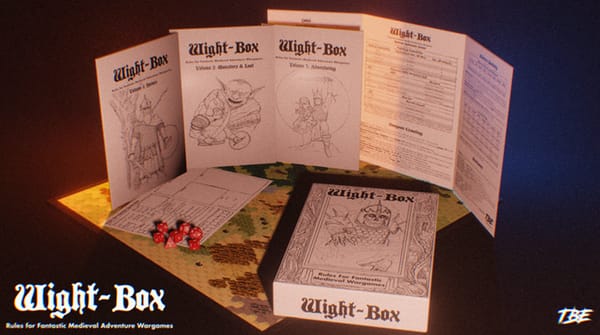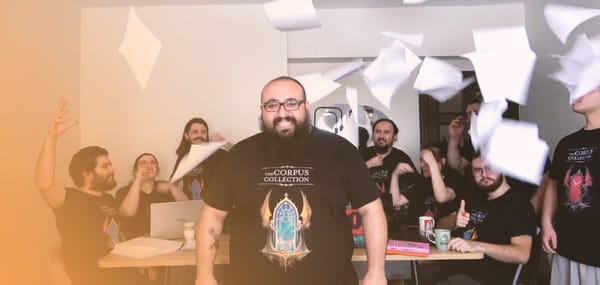The Importance of Artwork in TTRPGs: How to Make Your Game Visually Stunning

When it comes to tabletop roleplaying games (TTRPGs), the artwork is more than just an aesthetic addition—it’s a critical component that enhances gameplay, attracts backers, and helps to bring your world to life. Whether you’re designing a new game or running a crowdfunding campaign, your artwork is often the first thing potential backers and players notice. In this post, we’ll discuss the importance of artwork in TTRPGs and offer tips on how to make your game visually stunning.
1. Art Sets the Tone and Atmosphere
The visual style of your game is key to setting the tone and atmosphere. Whether your game is dark and gritty, whimsical and fun, or epic and heroic, the artwork should reflect the world you’ve created and the type of experience you want players to have.
- Match the Art to the Theme: The art should complement your game’s themes and genre. A high-fantasy RPG will likely feature fantastical creatures, sprawling landscapes, and magical imagery, while a cyberpunk game might have neon-lit cityscapes and futuristic technology.
- Establish a Consistent Visual Language: Consistency is important in TTRPG artwork. Establish a visual language that remains consistent across all your illustrations, maps, character designs, and other visual assets. This helps to create a cohesive experience for the players and makes the game feel more immersive.
2. Artwork Provides Visual Clarity
TTRPGs often involve complex rules and mechanics that can be hard to grasp through text alone. Well-designed artwork helps to clarify rules, concepts, and gameplay mechanics, making it easier for players to understand how things work.
- Visualizing Mechanics: For games with intricate mechanics or custom systems, illustrations can help players understand how these mechanics operate in the game world. For example, character sheets, equipment diagrams, or action sequences can be illustrated in a way that makes them easier to comprehend.
- Breaking Down Complex Ideas: Artwork can break down complex concepts into digestible visuals. This is especially helpful in a game where there are many different factions, species, or types of magic—visual representations allow players to quickly understand different elements without having to flip through pages of text.
3. Art Draws Players In
When potential backers or players browse through TTRPG materials, one of the first things that will grab their attention is the artwork. Stunning illustrations and well-designed visuals can make your game stand out in a crowded market.
- Aesthetic Appeal: High-quality artwork catches the eye and draws people in. If your artwork is compelling, it can immediately make people excited to learn more about your game. Stunning art is also more likely to be shared on social media, helping to spread the word about your game and attract backers.
- Fostering a Sense of Immersion: Visuals play a significant role in helping players immerse themselves in your game. A beautifully illustrated setting, dynamic characters, and detailed environments transport players into your world, making the game feel more alive and real. Art helps establish a sense of place, whether it’s a bustling city, a magical forest, or a war-torn battlefield.
4. Art Inspires Creativity
TTRPGs are all about creativity—whether it’s building characters, imagining new worlds, or telling collaborative stories. Artwork can inspire players’ creativity by sparking ideas for their characters, stories, and campaigns.
- Character Inspiration: A beautifully drawn character portrait can give players ideas for their own characters. Artwork that showcases diverse character designs, outfits, and poses can inspire players to create unique personas and backstories that fit within the game world.
- Worldbuilding Inspiration: Maps and environmental illustrations can fuel a player’s imagination, helping them envision places they’ll explore in the game. Detailed illustrations of towns, cities, or landscapes allow players to interact with and expand on your world, bringing it to life in their own unique way.
5. Art Makes Your Game Marketable
When running a crowdfunding campaign or promoting your TTRPG, artwork is your most powerful marketing tool. Whether you’re using social media, online stores, or conventions, stunning art is an essential part of making your game stand out.
- Creating Engaging Social Media Content: Share snippets of your game’s artwork on social media to generate interest. Fans love to see new art, especially when it’s accompanied by exciting updates about your project. Regularly posting new illustrations, character designs, or world-building concepts helps to keep your audience engaged.
- Engaging Backers Through Visual Content: In a crowdfunding campaign, backers want to see what they’re getting for their money. High-quality art gives them a preview of what the final product will look like and helps build trust. Whether it’s a beautifully illustrated rulebook, a detailed map, or concept art for upcoming expansions, backers are more likely to pledge when they see the level of quality and care you’re putting into your project.
6. Commissioning Art: What to Look for in an Artist
If you’re not an artist yourself, you’ll likely need to commission artwork for your game. Finding the right artist is crucial to achieving the visual style and quality you want. Here are some things to keep in mind when commissioning art:
- Find Artists Who Specialize in TTRPGs: Many artists specialize in TTRPG art, so look for artists who are familiar with the specific needs of tabletop games. These artists understand the importance of readability, how to represent characters, and the best ways to convey a game’s atmosphere.
- Look at Their Portfolio: Always check an artist’s portfolio before commissioning them. Look for a style that matches your game’s aesthetic, whether it’s detailed and realistic or stylized and colorful. Ensure that their work is high quality and that they’ve worked on similar projects in the past.
- Set Clear Expectations: When working with an artist, make sure to clearly communicate your vision for the artwork. Be as specific as possible about the tone, style, and details of what you’re looking for. Provide reference material and be open to their creative input while also setting expectations about deadlines, payment, and revisions.
Conclusion
Artwork plays a crucial role in tabletop roleplaying games, from setting the tone to attracting backers and inspiring creativity. Whether you’re developing your game or running a crowdfunding campaign, high-quality, visually engaging artwork can make all the difference in capturing the attention of players and creating a memorable experience.
Investing in great art helps to bring your world to life and provides your players with the tools they need to immerse themselves in the game. If you’re not an artist, commissioning the right artist who understands your vision is essential to creating a visually stunning TTRPG that will resonate with your audience.





